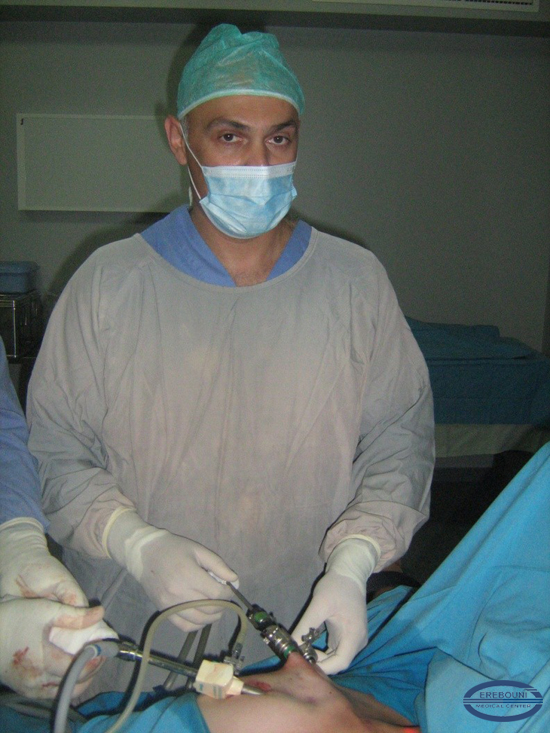Endoscopy in endocrine surgery is being used for more than 15 years and is constantly evolving. There are a several methods that are basically video-assisted surgeries and are performed through a small incision in the neck. But only transaxillar thyroidectonomy is performed through axillo - bilateral breast approach (ABBA), at which there aren`t any incisions neither on the neck nor in the region of anterior thorax wall and the endoscopic surgery is performed by using gas which provides ideal cosmetic effect compared to the other methods described above.
Today in all over the world in order to achieve the best cosmetic effect after thyroidectomy the endoscopic thyroidectomy through axillo-bilateral breast approach is performed. The scar in the neck which is formed after theroidectomy, often becomes the reason of refuse from surgeries, particularly in young women.
The essence of the method
The main feature of the modern surgery is that endo-video surgical instruments allow performing surgical interventions through 3 microincisions:
- access from in the right axillar region, (tool diameter 10 mm),
- Accesses in the area of the upper part of right and left mammary glands areola (tool diameter 5 mm, while the insertion of the instrument is carried out without any contact with mammal tissues).
Under general anesthesia the 0.5 cm incisions in the armpit region are made. Through these incisions the video cameras and ultrasonic knives are delivered through the skin to the neck. With the help of these instruments the endoscopic surgeries on thyroid and parathyroid glands are performed.
In about 3 to 4 hours after the surgery the patients can return to the normal daily activities without any limitations and on the next day it is possible discharge from the hospital.
Advantages of the method
In comparison to open surgeries this method provide:
- Ideal cosmetic effect
- Multiple time video magnification, which lets more clearly distinguish anatomical elements (parathyroid glands, nerves, vessels and other anatomical structures).
Due to minimal traumatism and maximally rapid recovery this technology is recognized worldwide the most effective method of surgery on the thyroid gland. In this case the skin on the neck remains untouched.
More recently this method was as fiction, but now - it's actually existing, safe and highly efficient method of surgical treatment. Such kind of intervention has been successfully performed in some hospitals in the USA, Germany and Japan already for several years.
The indications for interventions on the thyroid glands with so-called ABBA method are:
- Follicular cancer in size up 5 cm
- Benign (colloid nodules) with abnormal function or complaints (compression, pains, aesthetic problems)
- Multinodular euthyroid goiter with affection of both lobes
Contraindications for ABBA surgeries through axillary approach are:
- Malignant tumors
- Autoimmune thyroiditis
- Previously performed surgery on the thyroid gland or on the anterior wall of the neck
- Overweight
Types of thyroid surgeries
- Thyroidectomy is the removal of all thyroid gland
- Hemithyroidectomy is the removal of one of the lobes i.e. only half of the thyroid glands
Since 2010 in the Department of Endocrine Surgery of MC Erebouni 5 successful surgeries on the thyroid gland through transaxillar approach have been performed under the supervision of the Head of the Department Dr L.M. Mkhitaryan. It is important to note the fact, that such kind of surgeries was performed in Armenia for the first time in MC Erebouni. Implementation of a new surgery technique on thyroid gland through axillary approach helped to avoid postoperative cosmetic defects, reduce the level of postoperative complications, particularly subcutaneous bruising on the anterior wall of the thorax, and also provide early postoperative recovery of the patients and their return to normal daily activity.



